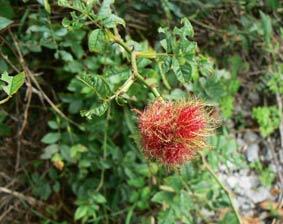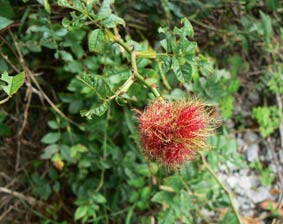Nature: hedging your bets

Fresh from judging Tipperary and Meath's hedgerow competitions, Éanna Ní Lamhna is thrilled with all things bushy
I have been like Padraic Colum's Old Woman of the Roads for the last two weeks, walking the by-ways of Ireland. Since it was initiated in Co Tipperary by John Devane in 2000, the annual hedgerow competition has grown by leaps and bounds. In Tipperary, it is known as the 'Golden Mile' and in Meath it is called the 'Harvest Walk', and it was in these two counties that I spent the last fortnight walking and judging all the mile entries.
Other counties run similar events: Kerry, Roscommon, Leitrim, Carlow, Galway and Limerick were all in at the last count. It must be nearly possible to have an all-Ireland 'Best Mile', which would be a wonderful rural walk along varied and interesting hedgerows which are totally free of litter and pleasing to the eye with features such as gate piers, old blacksmith's gates, drystone walls and arched stone bridges. There are many such miles now, proudly signposted on the rural roads.
The warm summer has led to a bumper harvest of nuts and berries. Never have I seen so many acorns, crab apples and hazelnuts and the lower reaches of the hedges are black with sloes, elderberries and blackberries.
There are plenty of red berries too – holly, yew, haws and rose-hips – and it was while I was admiring a particularly fine stand of rose-hips that the "thing" in the accompanying picture caught my eye. I was thrilled – it's always great to find and recognise something that you only know from books. What else could it be but the Robin's Pincushion? This has nothing to do with junior robins taking up home economics in September and equipping themselves with all the things on the school list. In fact, it has nothing to do with robins at all.
It is a disease of the wild rose bush – a cancer if you will. It is caused by a particularly small species of wasp – a gall wasp – that rejoices in the Latin name of Diplolepis rosae. This tiny, solitary wasp lays its eggs in the twigs of the wild rose and these eggs stimulate the rose cells to divide madly and make this characteristic gall. The inside of the gall is food for the developing larvae which munch away inside. When they have eaten enough and developed to the right size, they pupate and emerge as a tiny, winged wasp with a black head and thorax and an orange body. It has no sting, of course, as it is a solitary wasp, not a communal one with a queen to defend. It is only interested in finding more rose twigs to lay on. It isn't even interested in looking for a male, as the most of these gall wasps are female and can lay eggs parthenogenetically. There's a quare one for you now!
